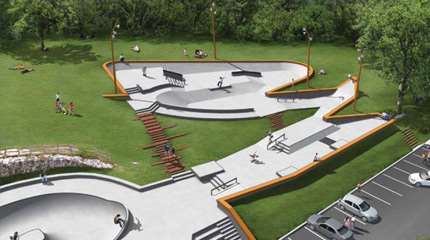Skating: A Full-Fledged Means of Transport
Par alfathor |
Publié le 24 April 2009 |
Mis à jour le 3 November 2020 |
Catégories :
All
All
| Sous-catégories :
The place of rollerskating in our societies
The place of rollerskating in our societies
| 34710
| Tags :
Skating
skating Mean of Transport
transportation skating
At a time when the almighty automobiles reach their limits in saturated city centers, alternative means of transport carve out their place as urban mobility solutions. Skating, just like cycling, skateboarding or scooting, enters that same logics…
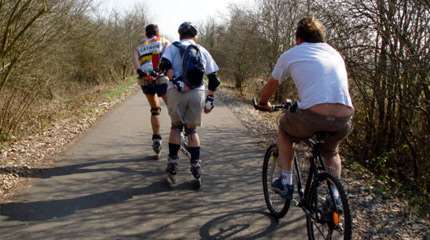
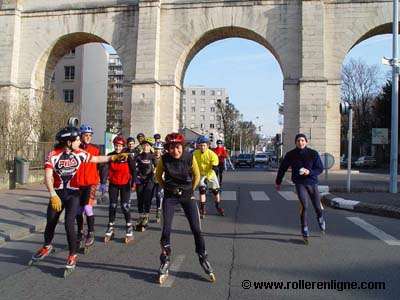 Venturing to write an article on skating as a means of transport on Online-Skating.com is preaching to the converted.
Venturing to write an article on skating as a means of transport on Online-Skating.com is preaching to the converted.
Indeed, the skating population has long assimilated that skating is a full-fledged means of transport. It is in the essence of the sport itself, in its DNA. Let’s hope that this article will be read by more people than just wheel-lovers. Let’s hope too that it will help consider skating as a supplementary and credible alternative solution to “all petrol” means for daily commutation.
We will start by reminding the pros of skating as a means of transport, before looking into the cons linked to that practice.
Pros
Most large cities are progressively being provided with huge bike fleets available to the public, like the Vélibs in Paris. Cycle lane networks are also progressively growing, except in some cities where cycles are retreating for questionable political reasons (hopefully those situations remain a minority).
Skating has many common points with cycling, like the use of cycle lanes. But there are also a few differences that should be reminded of, or highlighted.
Small-Sized
A pair of skates weights about 3 kg and doesn’t take much space, it is easy to carry and store. It is about the same weight as the average laptop.
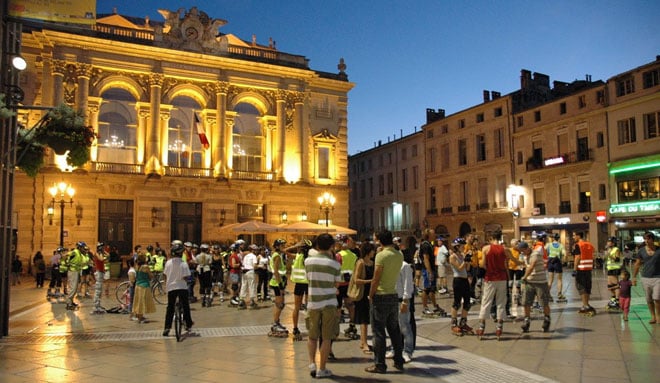 If you compare the room needed for a pair of skates and that needed for a bike, you quickly realize how much space you save! No need for a special spot to store them when arriving at work or at home. They hardly take more room than a pair of shoes. you can bring them about everywhere, even in elevators, in which bikes are sometimes hard to fit.
If you compare the room needed for a pair of skates and that needed for a bike, you quickly realize how much space you save! No need for a special spot to store them when arriving at work or at home. They hardly take more room than a pair of shoes. you can bring them about everywhere, even in elevators, in which bikes are sometimes hard to fit.
No Stealing
No need either for a locker to fasten your skates to a post in the street, with the risk of getting back home with a single front wheel and the lock attached to it! Your skates enter your locker at work, or know how to be discreet in a corner of your office room.
Maneuverability
As long as you’ve got a reasonable technical level, skates offer great flexibility of use. You can switch from sidewalks to cycle lanes to roads (careful!) in the blink of an eye. So that you can evolve fluently in the hearts of cities without big disruptions of pace.
In theory, bikes are not allowed on sidewalks — which doesn’t prevent bikes to regularly use sidewalks, though! — and skates are tolerated, just like on cycle lanes and tracks. But note that, in case of an accident between a cyclist and a skater on a cycle lane, the cyclist is within their rights. You’re not at home on cycle lanes. Make sure you respect the cyclists’ flow and traffic, and the legislation applying to skating.
Traffic jams with a long car lines become details: a delivery truck is blocking the road by double parking? No problem, pass to the side. You’re reaching a restricted traffic zone reserved for pedestrians? Never mind, skates are allowed, and you can weave in and out between the passers-by (at a moderate pace, of course).
When you meet an obstacle, the skates’ maneuverability allows for faster and more efficient dodging, as long as your technical level is sufficient enough. But whatever happens, care and respect of the road safety rules and of the other commuters, as well as anticipation, remain essential!
Speed
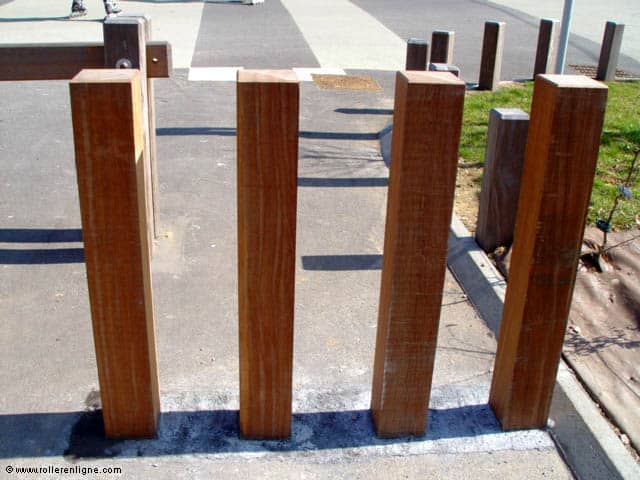 Skaters who regularly practice can easily skate at the same pace as a cyclist (between 15 and 30 kph, even more). Commutation times between home and work are about the same as cycling, and even better than driving a car in big cities. The maneuverability of skating often enables you to gain a little time. And isn’t it fun to overtake a bicycle before work?
Skaters who regularly practice can easily skate at the same pace as a cyclist (between 15 and 30 kph, even more). Commutation times between home and work are about the same as cycling, and even better than driving a car in big cities. The maneuverability of skating often enables you to gain a little time. And isn’t it fun to overtake a bicycle before work?
Game Dimension
Being an active agent of your commutation is way more pleasant than being passively seated behind your car wheel, brooding over the traffic jam! Having a circuit from A to B can be fun: slaloming between two poles, going up and down sidewalks, skating over a hump, seeing drivers raging in the crowd of blocked cars while casually zooming to your arrival point…
Health Benefits
Except for a couple inevitable falls, skating is a great activity for your physical fitness, improving your breathing and heart capacities, strengthening your lower back and your core, improving your balance. We have dedicated a whole article to the subject, don’t hesitate to look it up.
Ecological Dimension
Low-polluting and noise-free, skating has serious ecological assets, offering smooth commutation with very low impact on the environment. Emissions are limited to those of the skates’ manufacturing, to the oil escaping from the bearings and to the wear of the wheels’ PU on the ground.
Skating: A Link of Intermodality
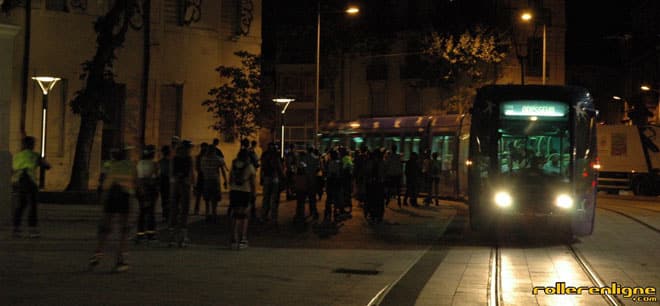 Ever heard of the notion of intermodality? It is about combining several means of transport to get from point to another, quickly and efficiently.
Ever heard of the notion of intermodality? It is about combining several means of transport to get from point to another, quickly and efficiently.
We know that in most agglomerations, commuting is fastidious, especially from suburb to suburb. You can then use different means of transport: leaving the suburb by train or car, reaching the periphery of the city, and putting your skates on to get to a location that is poorly serviced by public transport.
If you compare, going by skate is often just as fast as taking the metro or the tramway.
Limitations
Now that we have made a wonderful depiction of the pros of skating as a means of transport, we will yet nuance our statements. But don’t be discouraged to put on your wheels afterwards!
Technical Level Needed For Urban Skating
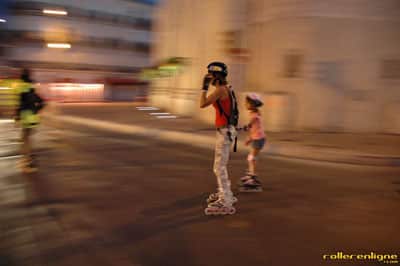 The first limiting factor remains, for a lot of skaters, their ease on skates: the stable environment of the indoors place you practice in, with a smooth ground, obstacle-free, supervised by a coach, cannot be compared to the urban jungle!
The first limiting factor remains, for a lot of skaters, their ease on skates: the stable environment of the indoors place you practice in, with a smooth ground, obstacle-free, supervised by a coach, cannot be compared to the urban jungle!
Sidewalks, cobblestones, anti-skid strips, manholes, water or petrol puddles, passers-by, dog leashes, other commuters: these are as many potential obstacles you may meet.
It is recommended to get acquainted with a few skating techniques for those obstacles (which are all relative, though) to become commonplace and even become part a game.
Once you master your skates, skating the city become a real pleasure. Urban environments remain skaters’ favorite playgrounds.
Weather Variations
Skating, just like motorbiking and cycling, remains subject to weather conditions. You can totally skate in the rain, the drill may just prove to be a bit more risky if you don’t adjust your skating technique and don’t adapt your equipment.
Because of the wet ground, you should adjust your skating: smaller strides, with less amplitude and less power, lower body stance. You will also need a lot of time and patience once back home to clean and maintain your equipment, if you don’t have anti-rust bearings.
Hygiene
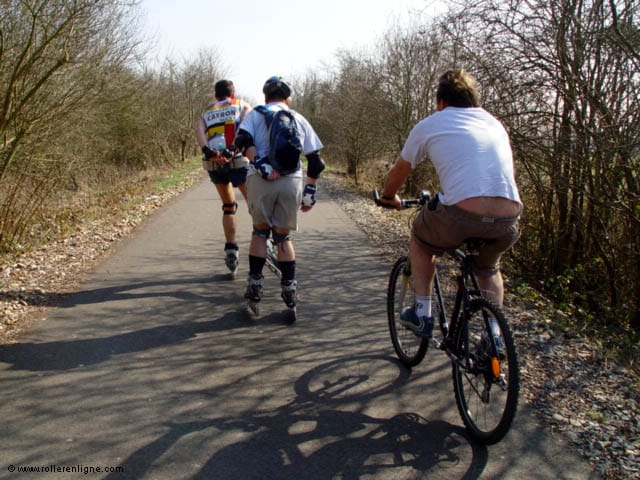 Proud as a peacock on your wheels, you arrive victorious at your work place. You have dodged the revengeful chihuahua and its traitorous telescopic leash, brushed past the vicious wooden post standing in the middle of the lane, avoided by a whisker the manhole with the stolen cover on the roadway, gamboled like a happy-go-lucky lemur on wheels throughout the city. You have avoided all traps and tricks… and you’re sweating like an ape!
Proud as a peacock on your wheels, you arrive victorious at your work place. You have dodged the revengeful chihuahua and its traitorous telescopic leash, brushed past the vicious wooden post standing in the middle of the lane, avoided by a whisker the manhole with the stolen cover on the roadway, gamboled like a happy-go-lucky lemur on wheels throughout the city. You have avoided all traps and tricks… and you’re sweating like an ape!
If you can shower at work, then the problem is solved. Otherwise, your boss might roll their eyes looking at the rings of your armpits.
It is the whole dilemma. You want to commute in reducing your impact on the environment while taking care of your health, but companies having showers at their employees’ disposal are too rare. With regards to the number of people going to work with other transport means than cars, they may become more common in the future.
But until then, don’t forget to have an extra set of clothes in your bag and at your office.
The Lack of Appropriate Infrastructures
Skating has perfectly found its place as an intra and peri-urban means of transport, but what about the rural environment?
Not only the coating of country roads is inadequate, but cycle lanes allowing you to skate (or cycle) safely are too rare. You have then to make do with using the country roads that are the less busy. For your own safety, don’t forget to make yourself visible at night and in the winter time!
Goods Carriage Capacity
A pair of skates can easily bring you to the supermarket, but you will probably not be allowed to enter it if you’re perched on your wheels.
Skates may not require a parking spot, but their storage capacity is quite limited when you need to transfer the weekly content of your chock-full shopping cart. You may use a shopping bag with wheels (or a suitcase) and pull it behind you… Unless you can borrow the cart, push it to your place, unload, and bring it back to the supermarket?
A Status Needing Improvement/Definition?
In France, a few years ago, several people who were using their skates as means of transport had the bad surprise of being fined by the authorities, by virtue of a law article forbidding to play on public roads.
Fortunately, after legal proceedings, most of the official complaints were dropped, and case law was on their side. The fact remains, however, that the status of skaters is still unclear. Until then, being considered as pedestrians leaves us leeway…
A Few Tips
In order for skating to find its place amongst the other means of transport, a minimum of courtesy and manners are required.
Respecting The Highway Code And The Other Users
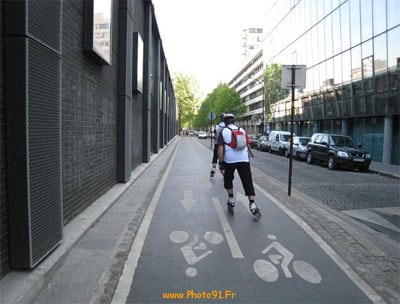 Skaters are not Barbarians, contrary to the image that some city councils still persist in conveying. Let’s prove them that skaters are citizens above all!
Skaters are not Barbarians, contrary to the image that some city councils still persist in conveying. Let’s prove them that skaters are citizens above all!
Wherever you skate, remember you are only just tolerated:
• On sidewalks, skate at a crawl and continuously check the passers-by’s reactions.
• On cycle lanes and tracks, cycles have priority.
• On green lanes, all users have the same rights. Cohabitation only works if each and every one respects common rules.
• At night or in darker areas, wear a reflective or luminous equipment in order to be seen. It is compulsory in some countries.
• On roads, cars remains queens of the asphalt. Like cycles, skates don’t carry much weight compared to the cars’ steel armors, even if they are within their rights. Don’t act tough, regularly have a look over your shoulder, and keep to the side when a car passes you by, even get to a stop if needed: your wide skater’s strides may catch the driver by surprise.
• Never skate facing the traffic like a pedestrian, even if it is required in the Highway Code, as it could frighten car drivers who are not expecting to find you there.
A Little Courtesy Has Never Killed Anybody
Greet the other users, thank them if they make the effort of letting you pass, anticipate crossroads in choosing your traffic direction, slow down when reaching blind turns and crossings, or when passing pedestrians who could be surprised by your speed.
It is no use to remind people leaving their dogs and children unattended that they are not respectful to others, or that they jeopardize the survival of their offspring: in those cases, whatever you say, they will always find an excuse to haul you over the coals, because in the end, you will always be the big bad skating wolf…
“I will bend like a reed in the wind”… Zen!
Useful Links
- Going to work by skate: good or bad idea?
- Skating and territorial development policy
- Perception of skating by the general public
- Impact of the urban pollution on skaters’ health
- Skating in the rain

